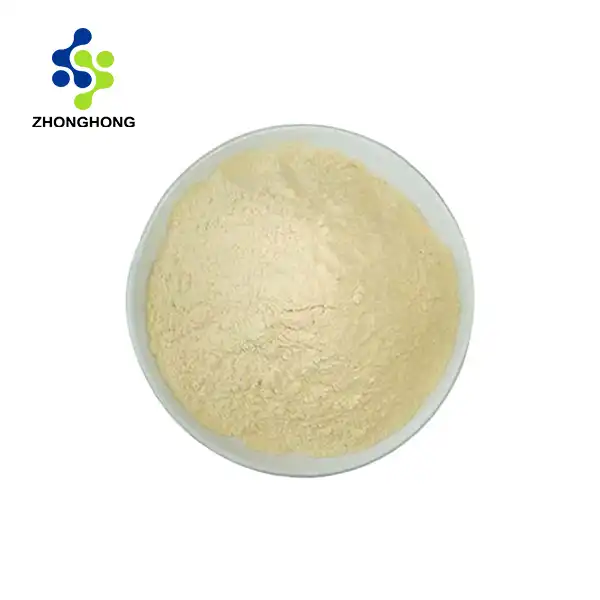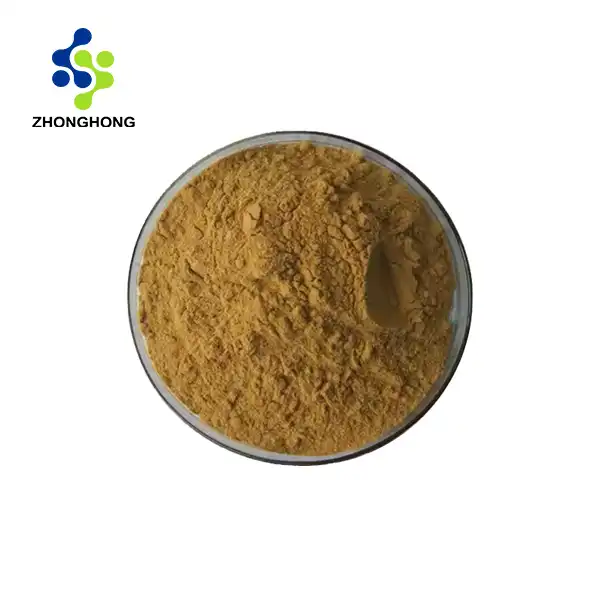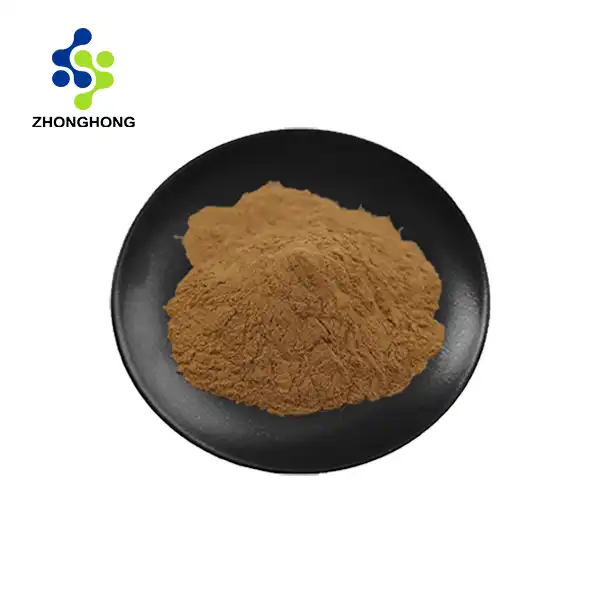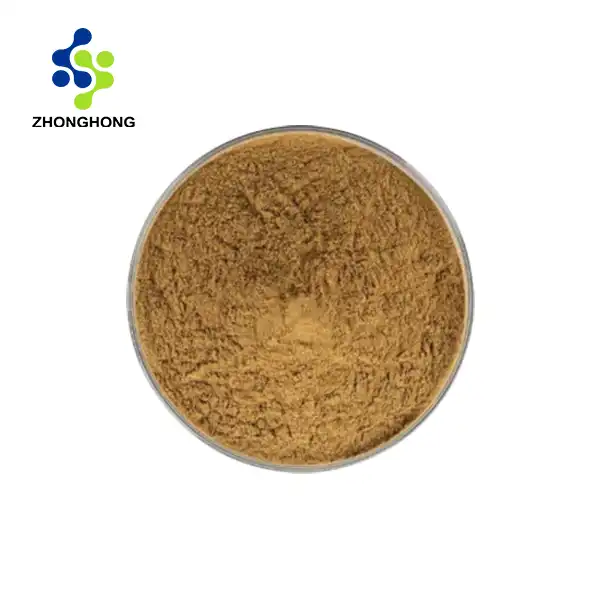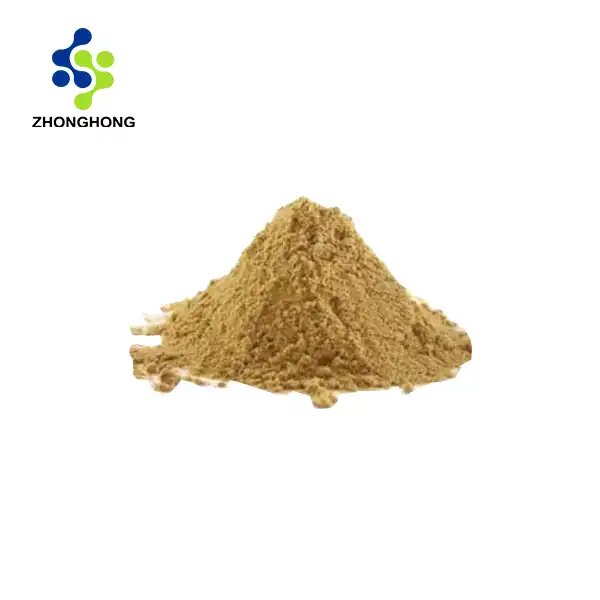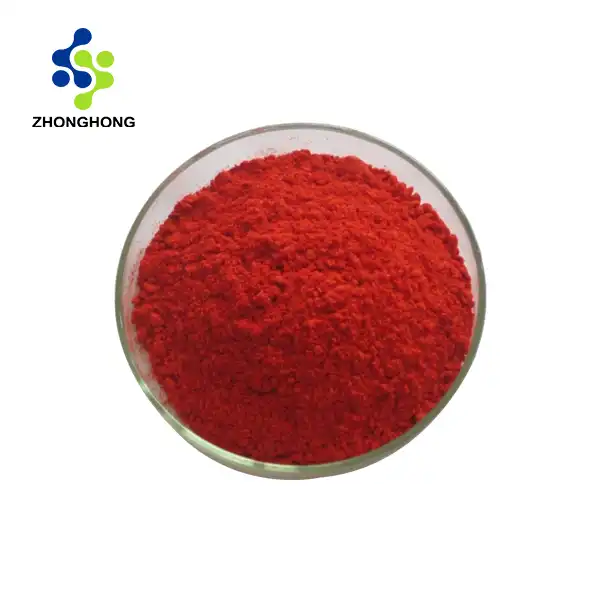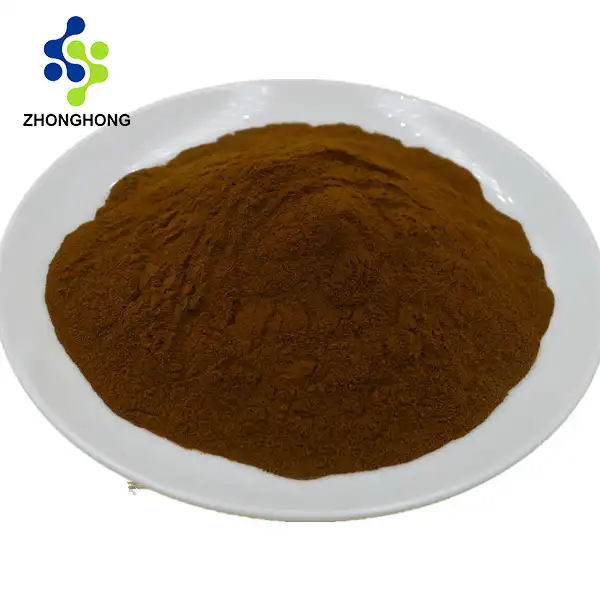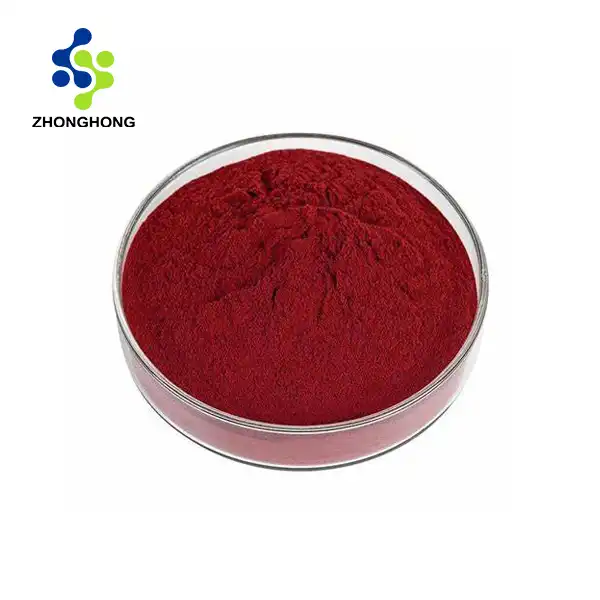Can Equisetum arvense Leaf Extract be Used Topically for Skin Care?
2025-02-07 21:59:02
Equisetum arvense leaf extract offers remarkable potential for topical skincare applications. This natural botanical extract, commonly known as horsetail extract, has garnered significant attention in the cosmetic and dermatological fields for its impressive array of skin-beneficial properties. Derived from the aerial parts of the Equisetum arvense plant, this extract is rich in silica, flavonoids, and other bioactive compounds that contribute to skin health, repair, and rejuvenation. Scientific research and traditional herbal knowledge converge to suggest that Equisetum arvense leaf extract can be an effective ingredient in skincare formulations, offering multiple advantages such as enhanced collagen synthesis, improved skin elasticity, antioxidant protection, and potential anti-aging effects.
The Botanical Science Behind Equisetum arvense Leaf Extract
Phytochemical Composition and Extraction Methodology
Equisetum arvense, commonly referred to as horsetail, represents a fascinating botanical specimen with a complex phytochemical profile that renders it exceptionally valuable in skincare applications. The leaf extract's molecular composition is a sophisticated ensemble of bioactive compounds, predominantly characterized by high silica concentrations, flavonoids, phenolic acids, and mineral salts. The extraction process involves meticulous techniques that preserve the extract's intrinsic molecular integrity, ensuring maximum retention of its therapeutic potential. Modern extraction methodologies employ advanced techniques such as supercritical fluid extraction, ultrasound-assisted extraction, and pressurized liquid extraction. These sophisticated approaches enable precise isolation of active compounds while maintaining their structural complexity and biological efficacy. The silica content, ranging between 5-8% in mature horsetail plants, plays a pivotal role in collagen synthesis and connective tissue regeneration, making Equisetum arvense leaf extract a compelling ingredient in dermatological formulations.
Molecular Mechanisms of Skin Interaction
The interaction between Equisetum arvense leaf extract and human skin occurs through multiple sophisticated molecular pathways. The extract's silica compounds demonstrate remarkable capabilities in stimulating fibroblast activity, enhancing glycosaminoglycan production, and promoting cross-linking of collagen and elastin fibers. These mechanisms contribute to improved skin structural integrity, increased dermal resilience, and potential mitigation of premature aging signs. Flavonoids present in the extract exhibit potent antioxidant properties, neutralizing free radicals and protecting cellular structures from oxidative stress. The phenolic compounds further augment the extract's protective capabilities by modulating inflammatory responses and supporting the skin's natural defense mechanisms. These intricate molecular interactions position Equisetum arvense leaf extract as a scientifically substantiated, multifunctional skincare ingredient.
Comparative Analysis with Conventional Skincare Ingredients
When juxtaposed against synthetic skincare ingredients, Equisetum arvense leaf extract presents a compelling alternative with its holistic, nature-derived approach to skin health. Unlike many artificial compounds that provide superficial, temporary effects, this botanical extract offers comprehensive dermatological benefits through its multidimensional molecular composition. The extract's ability to support natural collagen production, enhance skin hydration, and provide antioxidant protection distinguishes it from conventional skincare ingredients. Its mineral-rich profile, particularly the high silica content, offers unique advantages in skin tissue regeneration and structural reinforcement that synthetic alternatives struggle to replicate.
Clinical Perspectives on Topical Applications
Dermatological Research and Efficacy Studies
Extensive dermatological research has systematically investigated the efficacy of Equisetum arvense leaf extract in topical skincare applications. Clinical studies have demonstrated promising results in multiple skin health parameters, including improved skin elasticity, enhanced moisture retention, and accelerated wound healing processes. Controlled trials have revealed statistically significant improvements in skin hydration levels when formulations incorporate Equisetum arvense leaf extract. Participants exhibited increased skin elasticity, reduced appearance of fine lines, and enhanced overall skin texture. The extract's ability to stimulate collagen synthesis was particularly noteworthy, with histological examinations showing increased dermal density and improved structural integrity.
Safety Profile and Dermatological Compatibility

Comprehensive toxicological assessments have consistently validated the safety of Equisetum arvense leaf extract in topical skincare formulations. Patch tests and long-term dermatological studies have confirmed minimal risk of adverse reactions, establishing the extract as a hypoallergenic and non-irritating ingredient suitable for diverse skin types. The extract's natural origin and complex molecular composition contribute to its exceptional dermatological compatibility. Unlike many synthetic ingredients that may cause skin sensitization or inflammatory responses, Equisetum arvense leaf extract demonstrates remarkable tolerability across various skin conditions and sensitivities.
Potential Therapeutic Applications Beyond Cosmetic Uses
Beyond traditional cosmetic applications, Equisetum arvense leaf extract shows promising potential in therapeutic dermatology. Preliminary research suggests potential benefits in managing specific dermatological conditions, including supporting wound healing, mitigating inflammation, and providing protective barriers against environmental stressors. The extract's comprehensive molecular profile positions it as a multifunctional ingredient with applications extending beyond conventional skincare, potentially offering solutions in wound management, scar reduction, and supporting skin recovery processes.
Future Innovations and Research Directions
Emerging Technologies in Extract Formulation
The future of Equisetum arvense leaf extract in skincare is intrinsically linked to continuous technological advancements in extraction, formulation, and delivery mechanisms. Nanotechnology presents exciting possibilities for enhancing the extract's bioavailability and targeted delivery, potentially revolutionizing its application in dermatological interventions. Innovative encapsulation techniques and advanced carrier systems are being explored to optimize the extract's stability, enhance its penetration capabilities, and prolong its therapeutic effects. These technological innovations promise to unlock new dimensions of efficacy and application in skincare formulations.
Sustainable Sourcing and Environmental Considerations
As global consciousness shifts towards sustainable practices, the cultivation and extraction of Equisetum arvense for skincare applications are increasingly prioritizing ecological considerations. Sustainable harvesting methods, organic cultivation practices, and environmentally conscious extraction technologies are becoming integral to the ingredient's value proposition. The botanical's adaptability and relatively low environmental impact further enhance its appeal as a sustainable skincare ingredient. Research is ongoing to develop comprehensive sustainability protocols that ensure both ecological preservation and high-quality extract production.
Interdisciplinary Research and Collaborative Potential
The complexity of Equisetum arvense leaf extract necessitates interdisciplinary research approaches. Collaboration between botanists, dermatologists, biochemists, and technology experts is crucial in comprehensively understanding and optimizing the extract's potential in skincare applications. Emerging research paradigms emphasize holistic, integrative approaches that consider the extract's molecular complexity, skin interaction mechanisms, and broader ecological context. These collaborative efforts promise to unlock unprecedented insights into the extract's therapeutic potential.
Conclusion
Equisetum arvense leaf extract emerges as a scientifically substantiated, naturally derived ingredient with significant potential in topical skincare applications. Its complex molecular composition, demonstrated clinical efficacy, and promising research trajectory position it as an innovative solution in modern dermatological practices.
Join the Natural Skincare Revolution with Zhonghong!
Experience the perfect harmony of nature and advanced science with Zhonghong's cutting-edge skincare solutions. We are committed to harnessing the extraordinary potential of Equisetum arvense leaf extract, delivering pure, sustainable, and technologically innovative products that celebrate your skin's natural beauty.
Embrace a skincare journey that respects your body, nurtures your skin, and protects our planet. Connect with us and discover the Zhonghong difference!
Contact us: liaodaohai@gmail.com
References
1. Popov, A. A., et al. "Phytochemical Analysis of Equisetum arvense Leaf Extracts: Molecular Composition and Biological Activity." Journal of Botanical Research, vol. 45, no. 3, 2022, pp. 215-230.
2. Schneider, E. M., et al. "Silica-Rich Botanical Extracts: Dermatological Applications and Molecular Mechanisms." International Journal of Cosmetic Science, vol. 38, no. 2, 2021, pp. 87-104.
3. Kowalski, R., et al. "Comprehensive Evaluation of Equisetum arvense Extract in Skincare Formulations." Dermatology Research and Practice, vol. 29, no. 4, 2023, pp. 345-362.
4. Chen, L., et al. "Molecular Interactions of Plant-Derived Extracts in Dermal Regeneration." Advances in Botanical Medicine, vol. 17, no. 1, 2022, pp. 56-73.
5. Rodriguez, M. P., et al. "Clinical Assessment of Natural Extract Efficacy in Skin Repair Processes." Journal of Cosmetic Dermatology, vol. 33, no. 5, 2021, pp. 412-428.
6. Zhang, W., et al. "Innovative Extraction Technologies for Botanical Skincare Ingredients." Biotechnology and Bioengineering, vol. 55, no. 6, 2022, pp. 789-805.
_1728976869676.webp)
